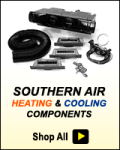Search Store
Shopping Cart
(0 items - $0.00)
Browse Store
- On Sale Now!
- Shop by Brand
- Alan Grove Components
- Autometer
- Bob Drake
- Borgeson
- Bosch
- California
- Direct Sheetmetal
- Edelbrock
- Electric Life
- Energy Suspension
- Flaming River
- Hagan Hot Rod Necessities
- Heidts
- Holley Performance Brands
- Hurst
- LOKAR Products
- MBM Brakes, Steering & Suspension Parts
- Meziere
- Mighty Wipers
- Moroso
- MSD Products
- Patriot Exhaust
- Pertronix
- Powermaster
- ProForm
- Quick Fuel Technology
- Rebel Wire
- Rocky Hinge
- Rostra Precision Controls
- Southern Air
- Specialty Power Windows
- SRP Brand
- Stewart Warner
- Taylor Cable
- Turbo Start Batteries
- UPI
- VDO
- VeeThree
- WILWOOD
- Zipp
- NEW PRODUCTS
- A/C Units & Kits by Southern Air
- A/C & Heat Components
- Apparel/Gear
- Brakes
- Chassis and Suspension
- Cooling
- Direct Fit Offerings by Vehicle
- Drivetrain
- Electrical and Ignition
- Advance Curve Kit
- Alternators
- Alternator Brackets
- Batteries and Accessories
- Cap and Rotor Kit
- Coil Covers
- Control Cable Kit
- Cruise Controls
- Distributors
- Distributor Gears
- Distributor Kits
- Harness Kit
- HEI Coil
- Hold Down Clamps
- Ignition Controls
- Ignition Module
- Ignition Systems
- Instrument Harness
- Lock Up Kits
- Power Antennas
- Spark Plug Wire Sets
- SRP Starters
- Head light Switches
- Wire Looms
- Wire Separators
- Wireless Contacts
- Wiring Accessories
- Wiring Kit
- Engine and Parts
- Breathers
- Serpentine Pulley Systems
- Chrome intake vacuum fittings
- Transmission Cooler
- Crankcase Evacuation System
- Engine Dipsticks
- Gear Drives
- Grommet Sets
- Harmonic Balancers
- Intake Manifold
- Motor and Transmission Mounts
- Motor Mounts
- Motor Mount Covers
- Oil Filler Tubes
- Oil Pans
- Power Steering Pumps
- Throttle Mounts & Brackets
- Timing Chain Covers
- Timing Chain Pointers
- Timing Tabs
- Trans Oil cooler
- Transmission Pans
- Valve Covers and Parts
- Water Necks
- Exteriors for Hot Rods
- Fuel Systems
- Gasser Section
- Golf Cart Tops
- Headers
- Headlights/Taillights/ Lighting
- IFS Kits
- Interior Components
- Legendary Auto Interiors
- LS Parts
- Mirrors
- Moroso
- Racecar Parts
- Safety Equipment
- Seat Belts
- Shifters
- Shop Tools
- Sound Deadener/Insulation
- Steering & Suspension
- United Pacific Classic Parts
- Vacuum Pumps and Canisters
- Wheels
- Wiper Motors and Parts
- Wiring Harnesses
Customer Support
Contact Us
Mailing List
Shopping Cart
(0 items - $0.00)
- © 2025 Southern Rods & Parts - All Rights Reserved
- Website prices are available ONLINE ONLY
- Privacy Policy
- Site Map
- Cirkuit: Best Ecommerce Platform


 Menu
Menu Close
Close
